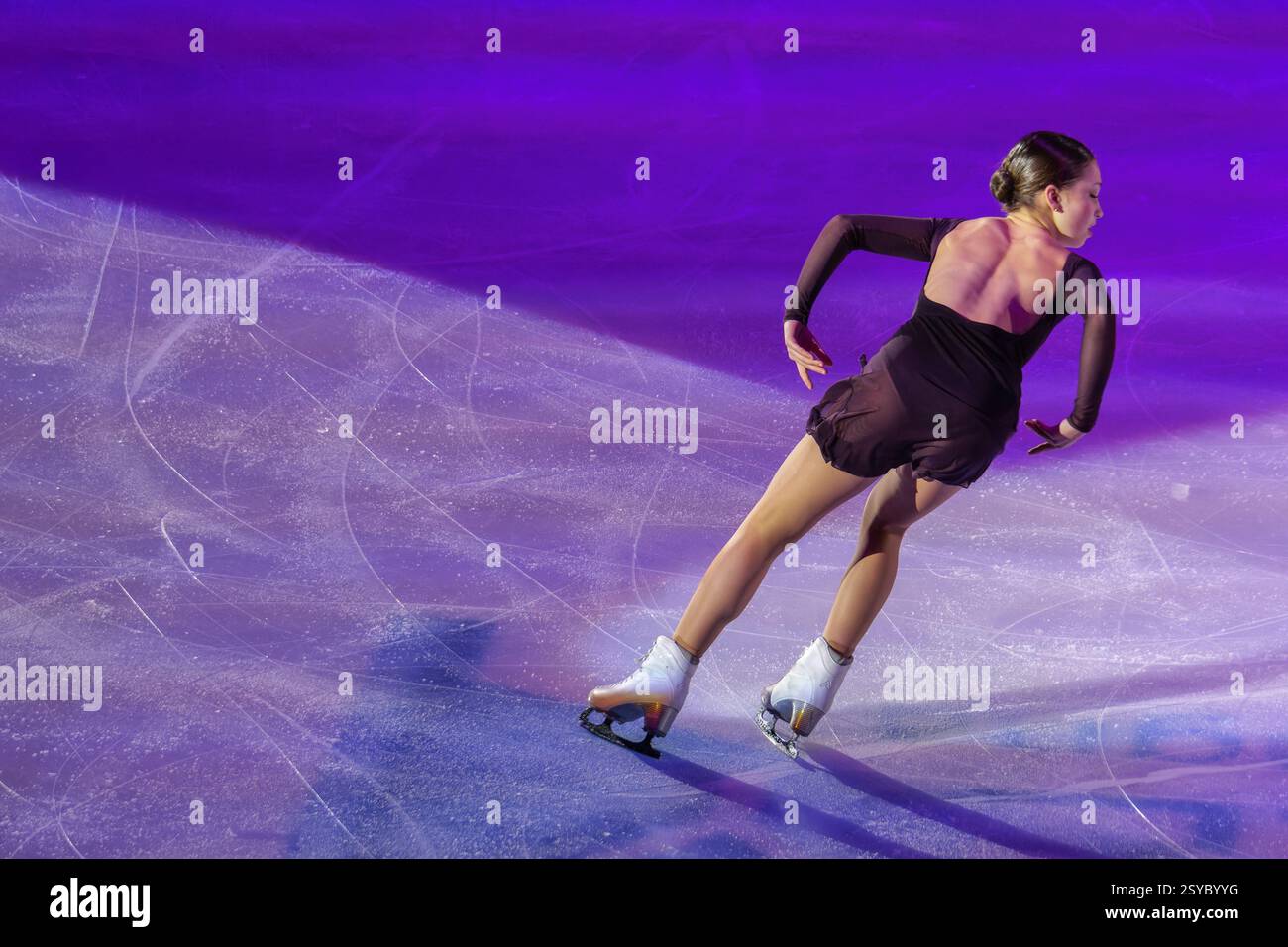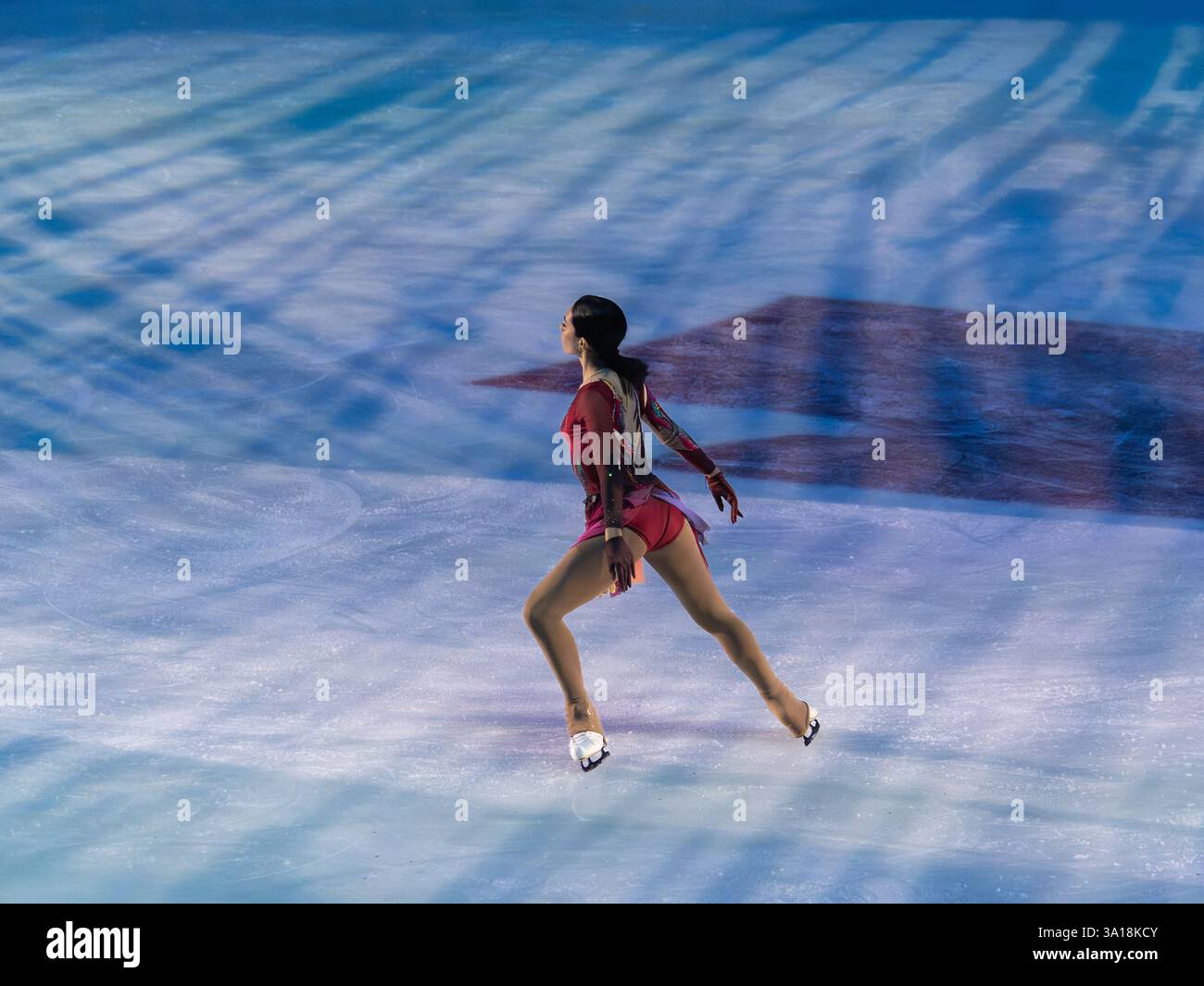
Mastering the Art: Elevating Your Artistic Ice Skating Performance
Ice skating, especially artistic ice skating, is more than just gliding across the ice; it’s a captivating blend of athleticism, artistry, and storytelling. To truly mesmerize your audience and leave a lasting impression, technical proficiency alone isn’t enough. This article delves into the crucial elements of crafting a compelling artistic performance, offering a comprehensive guide to enhance your skills and achieve your full potential.
I. The Foundation: Technical Mastery
Before diving into the artistic aspects, a strong technical foundation is paramount. Without solid skating skills, your artistic expression will be limited. This means:
-
Edge Control: Mastering the various edges – inside, outside, forward, and backward – is fundamental. Smooth transitions between edges are crucial for fluidity and seamless movement across the ice. Practice drills focusing on precise edge work, ensuring balance and control at all speeds.
-
Spins: Clean, fast, and controlled spins are visually stunning and a key component of artistic programs. Work on developing your various spin positions (forward, backward, camel, sit, etc.), ensuring consistent speed and maintaining upright posture. Focus on improving your entry and exit, minimizing any wobble or hesitation.
-
Jumps: Successful jumps require explosive power and precise technique. Master the fundamental jumps (waltz jump, salchow, toe loop, loop, flip, Lutz, Axel) before progressing to more complex combinations. Consistent practice is crucial for improving height, rotation, and landing technique. Accurate landings are vital; a wobbly landing detracts from the overall performance.
-
Footwork: Fluid and expressive footwork is the backbone of any artistic program. Practice intricate sequences that showcase your control and precision. Focus on maintaining a connection between your steps, avoiding abrupt changes in direction or speed. Vary your footwork patterns to create visual interest.
-
Flexibility and Strength: Artistic skating demands a high degree of flexibility and strength. Regular stretching and strength training are essential to prevent injuries and improve your performance. Yoga, Pilates, and off-ice training are invaluable in enhancing your overall athleticism and contributing to effortless movement on the ice.
II. The Art of Storytelling: Choreography and Interpretation
With a robust technical foundation, you can focus on transforming your skating into a captivating performance. This involves:
-
Choreography: A well-crafted choreography is the skeleton of your artistic performance. Work with a choreographer to create a program that showcases your strengths while challenging your abilities. The choreography should complement the music, telling a story through movement. Consider the overall flow and structure of your program, ensuring a balanced sequence of elements. Avoid a monotonous arrangement; incorporate variety in the speed, dynamics, and complexity of your movements.
-
Music Selection: The music you choose sets the tone and emotional landscape of your performance. Select music that resonates with you and allows you to convey your desired emotions. The music should inspire and motivate you, enhancing your performance and connecting you with the audience. Consider the tempo, rhythm, and dynamics of the music, ensuring your choreography matches the mood and intensity.
-
Expression and Characterization: Artistic skating is about communicating a story or emotion to your audience. Develop your ability to express yourself through your skating, creating a believable character and conveying your intended message. Your facial expressions, body language, and overall presentation are just as important as your technical skills. Practice portraying the different nuances of emotion, creating depth and authenticity in your performance.
-
Costume and Makeup: Your costume and makeup should enhance your performance, contributing to the overall aesthetic and characterization. Choose a costume that complements the style and theme of your program, ensuring it allows for freedom of movement and showcases your grace and elegance. Makeup should be carefully applied, enhancing your features and creating the desired look. Avoid excessive or distracting makeup.
III. The Performance: Presentation and Stage Presence
The final piece of the puzzle is the performance itself:
-
Stage Presence: Command the ice with confidence and charisma. Project your energy and passion, engaging with the audience and captivating their attention. Maintain eye contact, convey your emotions effectively, and project an air of professionalism and self-assuredness. A strong stage presence can elevate even a technically imperfect performance.
-
Connection with the Music: Your skating should flow seamlessly with the music, responding to the nuances and dynamics. The choreography should be perfectly timed to the music, enhancing its impact and emotional resonance. Practice your program repeatedly, synchronizing your movements with the music until it feels natural and effortless.
-
Precision and Control: Even with expressive movement, precision and control are still paramount. Maintain clean lines, precise landings, and consistent execution of your technical elements. Accuracy enhances the aesthetic appeal and reinforces the overall impact of your performance.
-
Posture and Alignment: Maintain good posture throughout your performance, projecting an image of elegance and poise. Proper alignment minimizes strain and improves the efficiency of your movements. Regular stretching and strengthening exercises can significantly enhance your posture and overall body alignment.
-
Audience Engagement: Connect with your audience; let your passion and energy shine through. Smiling and making eye contact can create a powerful connection with the audience, enhancing the overall impact of your performance.
IV. The Ongoing Journey: Practice and Refinement
Artistic ice skating is a continuous journey of learning and refinement. Consistent practice, feedback, and self-reflection are essential for improvement.
-
Regular Practice: Dedicate sufficient time to practice, focusing on both technical elements and artistic expression. Regular practice improves muscle memory, refines technique, and enhances your overall confidence. Vary your practice sessions to avoid monotony and maintain motivation.
-
Seek Feedback: Regularly seek feedback from your coach, choreographer, and other experienced skaters. Constructive criticism can help you identify areas for improvement and refine your skills. Use feedback as a tool for growth, striving to improve your technique and artistic expression.
-
Video Analysis: Filming your practice sessions and performances can provide valuable insights into your technique and performance. Analyzing your videos allows you to identify areas for improvement and refine your movements. Pay attention to details like posture, alignment, and the overall flow of your program.
-
Self-Reflection: Take time to reflect on your performances, both positive and negative. Identify areas where you excelled and areas where you need to improve. Use self-reflection as a tool for growth and development, setting goals for future performances.
Mastering the art of artistic ice skating requires dedication, discipline, and a passion for the sport. By focusing on technical proficiency, artistic expression, and captivating stage presence, you can elevate your performances and create truly unforgettable moments on the ice. Remember, the journey of artistic ice skating is a continuous process of growth and refinement, a pursuit of perfection that leads to breathtaking performances that resonate deeply with the audience.



